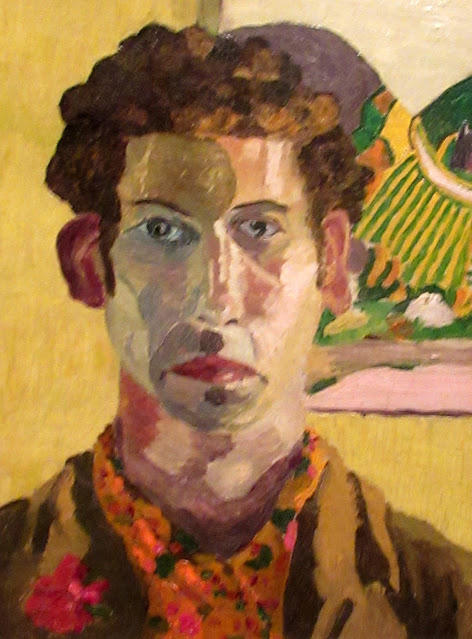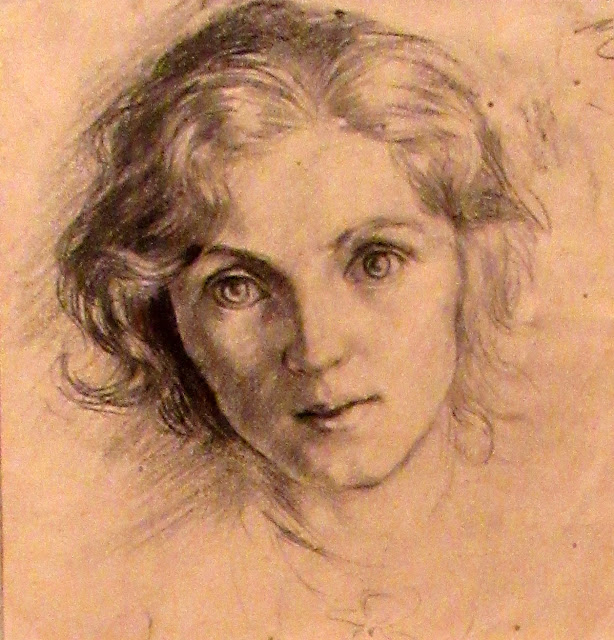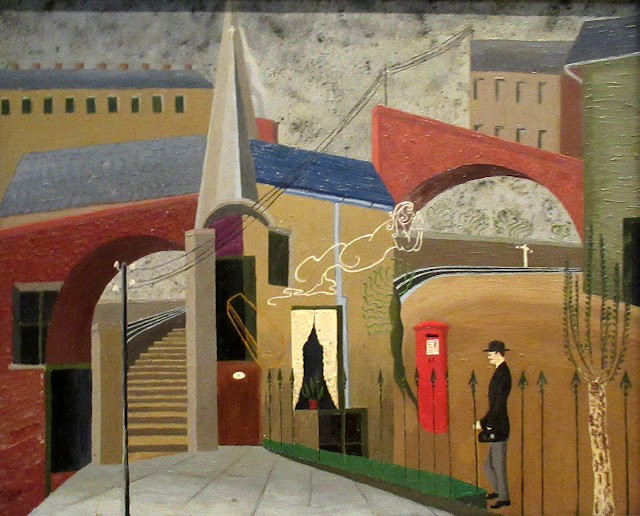Very misty in London last week when we visited Tate Modern.
Monday, 29 April 2024
Saturday, 27 April 2024
Bluebells

Wednesday, 24 April 2024
The Art of the Selfie
at the National Museum, Cardiff.
When the Musee d'Orsay approached the Cardiff Museum wanting to borrow La Parisienne by Renoir, the Museum were reluctant at first. La Parisienne has been in the Welsh collection since 1952 when it was bequeathed by the Welsh patron of the arts and Impressionist collector Gwendoline Davies and is one of their prized exhibits. In the end it was agreed that the Musee d'Orsay would reciprocate by sending Portrait of the Artist by Van Gogh which is now the centrepiece of an exhibition that poses the question: 'Is a self-portrait the original selfie?'
The exhibition looks at self-portraits the explores just some of the watys that artists have presented a face to the world. From the 1600s to the present day, these works reveal not just how artists see themselves, but also how they wish to be seen. Self-portraits are about much more than physical appearance. They are a way for artists to explore identity, a means of self-reflection or self-interrogation. They can tell us not just what the artist looked like, but about their life, environment, and even their state of mind.
Portrait of the Artist, 1887, (oil on canvas)
As a struggling artist, Van Gogh couldn't afford to pay for models so he used a mirror. He uses complementary colours - blues and oranges, reds and greens - in long brushstrokes which converge at the centre of the canvas to form his distinctive features. Each of Van Gogh's many self-portraits is different. They give us insight beyond the popular myths surrounding him. The portraits reveal a focused and diligent artist, ambitious and hopeful for his painting in spite of the mental health challenges he faced.
Anya Paintsil, Blod, 2022, (acrylic, wool, synthetic hair, alpaca, mohair and human hair on hessian)
Sunday, 21 April 2024
Art 100
Art 100 at the National Museum, Cardiff.
An interesting initiative: a display of the most popular artworks from the whole collection of the museum. This is how this initiative was explained to us:
Whose art is it anyway?
Wales' national art collection belongs to everyone, but in the past, only a few had the power to decide what's collected and how it's presented.
Is this fair? Who gets to choose what we see?
The curators at Amgueddfa Cymru selected 100 art works from our collections that we shared on Instagram, encouraging followers to like, comment, and share their favourites. Valuable lessons were learned and surprisingly, some works we thought would be popular didn't resonate online as much as contemporary pieces. From the responses, we compiled a shortlist of the most popular artworks, now on display in this gallery.

During our visit the museum was packed, and there were lots of school trips of students of all ages. The most well-behaved ones were this group: they were engaged, attentive and interested.
Now the collection:
Rachel Whiteread, Untitled (History), 2002, (plaster, polysterene and steel)
Books are repositories of our shared culture. This work was made by casting the space around a set of bookshelves. The books themselves are absent, only their ghostly traces remain. Whiteread has created a series of these sculptures that act as a form of memorial. Untitled (History) suggests how easily collective memory can be lost.
Gwen John, A Corner of the Artist's Room, 1907-08, (oil on canvas)
John paints a self-portrait with no-one in it. The discarded clothes and open book suggest an invisible presence, while the muted tones and simple forms convey a life of calm, order and self-containment.
Thomas Jones, Buildings in Naples, 1774, (oil on paper)
With its dusty blue and silver-grey tones and unusual cropping, this small oil sketch looks refreshingly modern but was actually painted in the 18th century. It was a private study, never meant for display. Its jewel-like quality has captured public imagination.





































































